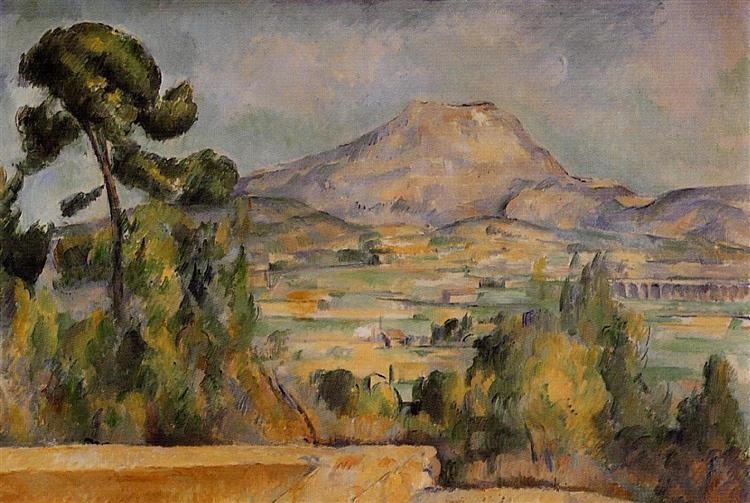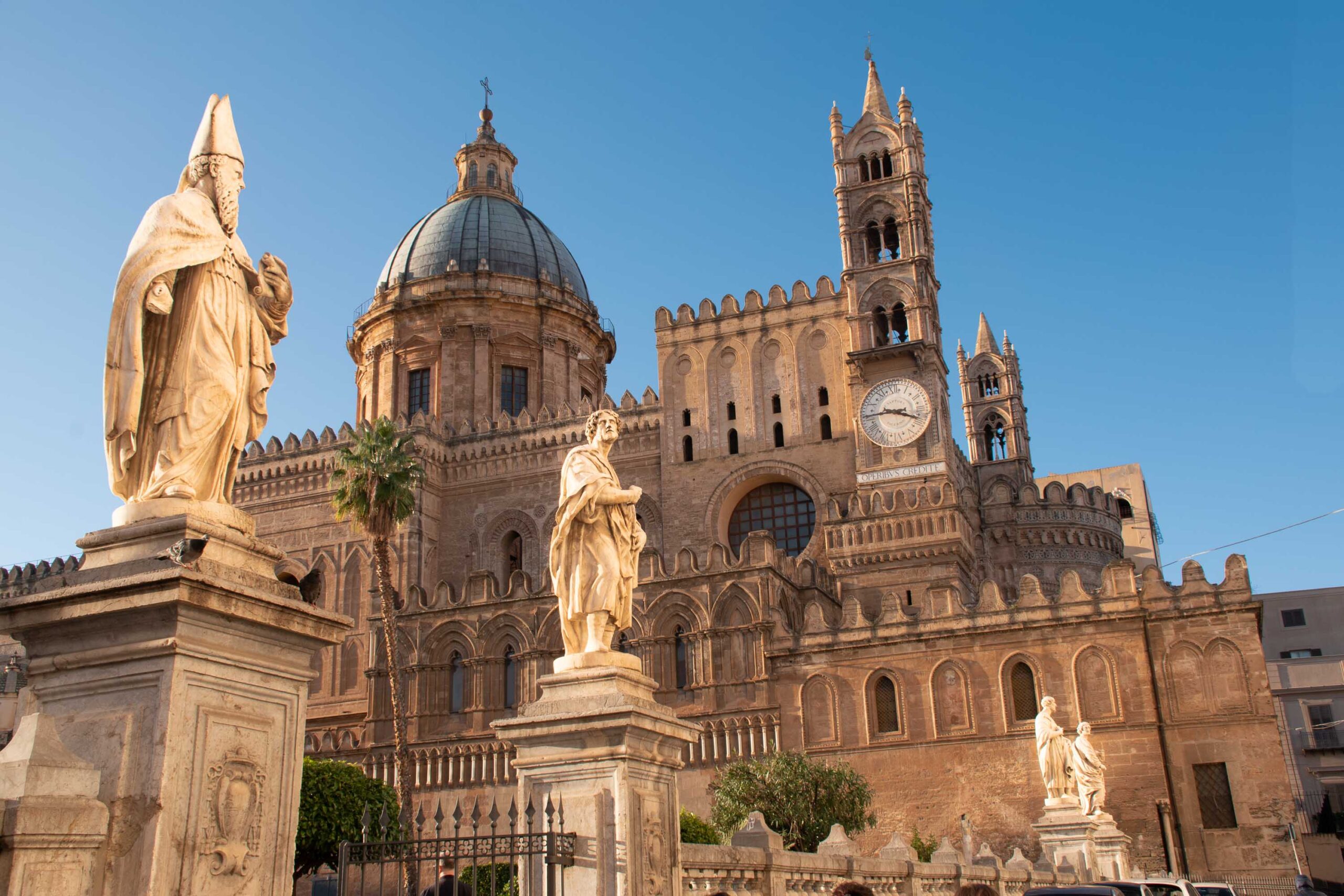
One of the reasons we travel is to experience other cultures – and one of the most fascinating and inspiring outputs of culture is art. Across the world, the art of a region tells the story of its people: their beginnings, their morals and beliefs, their growth and progress . . . and even their hopes for the future.
While most of our small group tours touch on artistry in some way, we’ve made a list of five tours that offer the most opportunities to experience (and even create) art – whether through paintings and sculptures or through architecture, calligraphy, ceramics, and more.
Read on and discover a tour that speaks to your inner artist.
For travelers with a preference for paintings, it's only appropriate that we start with France, the land of Monet’s flower-dotted countryside, Cézanne’s hilly village landscapes, and Renoir’s depictions of la belle vie. France’s art history reaches as far back as the Paleolithic period – indeed, some of the earliest artistic traces in human history come from Lascaux, France – but the painters that sprouted from the Impressionist and Post-Impressionist movements of the 19th and early 20th centuries have undoubtedly become France’s most recognizable.

We get our first glimpse of one of these artists’ works during our visit to Atelier de Cézanne in Aix-en-Provence, the studio where Post-Impressionist artist Paul Cézanne worked from 1902–1906. The nearby mountain of Mont Sainte-Victoire dominated Cézanne’s art; he produced some 44 oil paintings and 43 watercolors of it, the most famous of which were based on a panoramic view near his studio. Later, we enjoy a wine tasting at the foot of the mountain itself.

Our next artist of interest is the beloved Vincent van Gogh, the Post-Impressionist painter of famous works like The Starry Night, Café Terrace at Night, Vase with Fifteen Sunflowers, and many, many more. First, we visit Arles, the town where Van Gogh lived and painted from 1888–1889. Van Gogh’s time in Arles is known as one of his most prolific periods; he completed 187 paintings and drawings while living here, including Café Terrace at Night. The painting depicts Place du Forum, the city’s historical square that we see for ourselves while touring.

Next, we visit the acclaimed Carrières de Lumières multimedia art exhibition in Les Baux. Set within a former quarry, the exhibition projects moving images on the stone walls, giving life to the art on display. We then follow Van Gogh’s journey to the village of Saint Rémy. After severing his ear, the painter was confined here in the asylum of St-Paul de Mausole, which we visit during our sightseeing. Despite his apparent illness, Van Gogh finished a canvas nearly every single day during his time at the clinic. Some of these works include paintings of the wheat field outside of the asylum, several self-portraits, and, of course, the iconic The Starry Night.

Lastly, our artistic journey is punctuated by a visit to Saint-Paul-de-Vence, a picturesque medieval hilltop village once home to many prominent 20th century artists, including Marc Chagall, Pablo Picasso, and Henri Matisse. In fact, Chagall died and was buried here in 1985; we have the opportunity to visit his tomb if we wish. After a walking tour, we are at leisure to explore the many studios and galleries lining the streets, displaying works from Chagall, César, and Niki de Saint-Phalle among a host of other contemporary artists.
And if you still haven’t had your fill of French art, you can take our optional “on your own” post-tour extension to the French Riviera, where you may choose to visit the Chagall Museum and the Matisse Museum during your two-night stay in Nice.

On our tour of Greece, we appreciate the art of the ancients: statues, monuments, and temples, all fashioned many millennia ago. We first visit the National Archaeological Museum in Athens, home to the world’s most significant collections of Greek artifacts dating from Neolithic prehistory up through present-day. Exhibits include sculptures, ceramics, jewelry, frescoes, and much more.

Speaking of sculptures, at Delphi we encounter one of antiquity's greatest: the Charioteer of Delphi. This life-sized bronze figure is notable for its incredibly detailed facial features, realistic hands, and near perfect condition, despite being nearly 2,500 years old.

The Heraklion Archaeological Museum, which we visit on Day 9 of our tour, houses artifacts from some 5,500 years of history on the island of Crete. The museum is especially renowned for its Minoan collection, much of which was excavated from the palace of Knossos, which we also visit. The political center of Minoan civilization and legendary home of King Minos, the Labyrinth, and the Minotaur, Knossos is considered Europe’s “oldest city” and the largest Bronze Age archaeological site on Crete. Its remnants showcase the vibrant artistic culture that thrived here some three millennia ago.

On Insider’s Japan, we see the breadth of Japan's art – and even create some ourselves. First, we visit the Tokyo gallery of preeminent calligrapher Koshun Masunaga, where we learn about the ancient practice of artistic writing and browse the collection of pieces on display. We also get to try the craft ourselves during a hands-on lesson. Before leaving Tokyo, we stop by the Tokyo National Museum, which houses an extensive collection of art and antiquities from across Asia.

In Kanazawa, we call on the acclaimed Hakukokan, a museum that celebrates the art and craft of gold leaf and houses a collection of gold-leafed pieces dating back to the late 16th century. While here, we are shown how to apply real gold leaf and try our hand at decorating a plate with our own gold leaf patterns.

We also visit Unrakugama Pottery, a family-owned pottery house producing fine handmade ceramics and earthenware. Here, we get an up-close view of how these master potters craft a variety of pieces using only their hands, clay, and the potter's wheel.

We view some of Italy’s most renowned architecture on our tour of Sicily, among them the cathedrals and palazzos of 2,700-year-old Palermo. Just a few of the highlights of the city’s Arab-Norman treasures include Palermo Cathedral, Palazzo Reale, and the Church of San Cataldo.

Monreale is home to some of the finest Norman architecture still in existence, as we see while touring here. Monreale’s cathedral is perhaps the best example: it welcomes guests with an imposing main façade and an ornate outer cloister, which serve as preparation for the overwhelmingly breathtaking main sanctuary. Covered with painstakingly detailed mosaics, the main sanctuary contains some 4,850 pounds of pure gold in the tiles decorating the walls and ceilings.

Architecture galore continues with a visit to Agrigento, where we see the beautifully preserved Temple of Concordia and the massive temple of Olympian Zeus, believed to be the largest Doric temple ever built.

Even more elaborate art appears on our way to Syracuse at Villa Romana del Casale, which boasts one of the richest and largest collections of mosaics in the Roman world. In Syracuse, we explore the Archaeological Park of Neapolis, which comprises a range of ancient monuments ranging from a 5th century BCE Greek theater to a Roman amphitheater that once held gladiator spectacles.

Fans of contemporary studio art and historic and modern architecture will enjoy this tour of Portugal and northern Spain. In León, we encounter the city’s impressive historical and architectural heritage as we visit the 12th-century León Cathedral, one of Spain’s most beautiful with its sculpture-covered façade and impressive stained-glass windows. We are also introduced to the architect Antoni Gaudí’s work when we visit Casa Botines.


The artistic crown jewel on any tour of northern Spain is the Guggenheim Museum Bilbao, a modern and contemporary art museum. Designed by architect Frank Gehry, the jaw-dropping structure of limestone, titanium, and glass is its own artistic marvel, but within its walls live a vast and varied collection of sculptures, paintings, and exhibits that embody the very best of contemporary art, including Jeff Koon’s Puppy, Mark Rothko’s iconic red and yellow minimalist painting Untitled, Louise Bourgeois’s spiderlike structure Maman, and many more. While here, we also see Bilbao’s Fine Arts Museum with its rich collection of Spanish and Basque artwork.


Known as Catalan Modernism’s “golden boy,” Gaudí undoubtedly left his artistic mark on Barcelona with a wide collection of projects that add movement and life to the vibrant city.
If you're an art lover and want to experience the art of another culture or region, consider one of these small group tours – and if you’re ready to make the journey, give us a call to make your reservation today.
By using this website you are agreeing to our Cookie Policy.